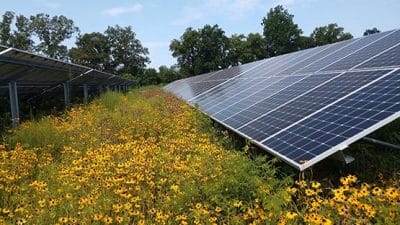
The Supplemental Filing provides route alternatives, variations and adjustments developed since Atlantic submitted its formal application on Sept. 18, to minimize impacts of the proposed route on several environmental, historic and public land issues.
“We believe these route adjustments meet the project’s critical need of supplying clean, inexpensive energy to public utility customers while protecting the environmental and cultural resources of communities along the route,” said Diane Leopold, president of Dominion Energy, which is responsible for routing, building and operating the Atlantic Coast Pipeline, pending FERC approval. “While the route adjustments themselves are minor, they reflect Atlantic’s strong and sincere commitment to listening to project stakeholders at every stage and addressing their concerns to improve the proposed route.”
The adjustments include:
- The Cheat Mountain Route Variation: This would reduce potential impacts on Cheat Mountain salamander occupied habitat in the Monongahela National Forest in Randolph County, West Virginia;
- The Cow Knob Route Variation: Proposed at the request of the U.S. Forest Service (USFS), Atlantic would use horizontal directional drill (HDD) construction to avoid potential impacts on Cow Knob salamanders and their habitat in the George Washington National Forest on and in the vicinity of Shenandoah Mountain in Highland and Augustacounties, Virginia;
- The Warminster/Swift Island Route Variation: Atlantic would avoid impacts within a wetland mitigation site and potential impacts on the newly identified, proposed Warminster Rural Historic District, both along the James River inNelson and Buckingham counties, Virginia;
- The Great Dismal Swamp Major Route Alternative: Proposed at the request of the U.S. Fish and Wildlife Service, Atlantic has further developed and is proposing an alternative route identified in the September filing to avoid crossing the Great Dismal Swamp National Wildlife Refuge. Atlantic would use HDD construction to cross under the Western Branch Reservoir as part of this alternative. The route would also avoid the Sunray Historic District.
Additionally, today’s filing provides an update on the status of the environmental field surveys Atlantic has conducted along the proposed route, as well as the anticipated filing dates for survey reports. These include updates on archaeological field surveys and surveys for rare, threatened and endangered species.
The FERC is being asked to certify the public benefit and necessity of the project. The FERC and a number of cooperating agencies will examine fully a broad number of issues, including public safety, air quality, water resources, geology, soils, wildlife and vegetation, threatened and endangered species, land and visual resources, cultural and historic resources, noise, cumulative impacts and reasonable alternatives. The FERC staff is preparing a draft Environmental Impact Statement on the project.










